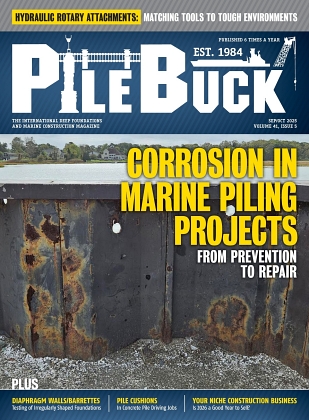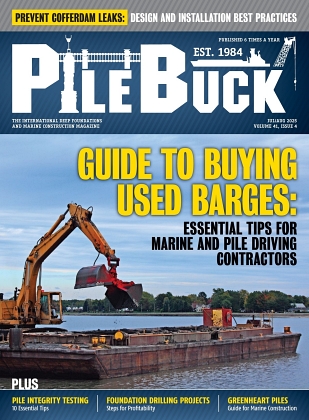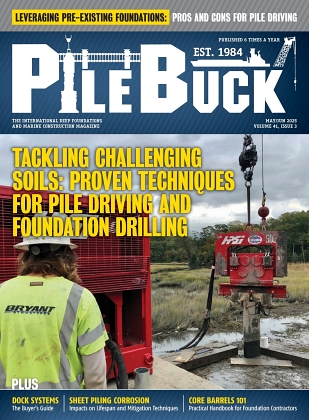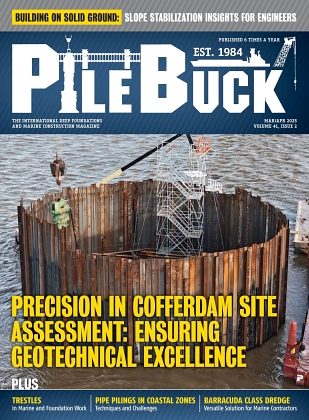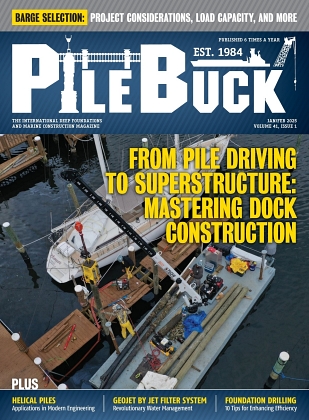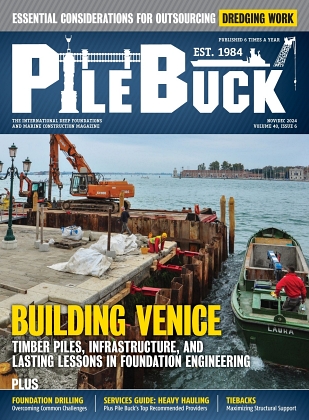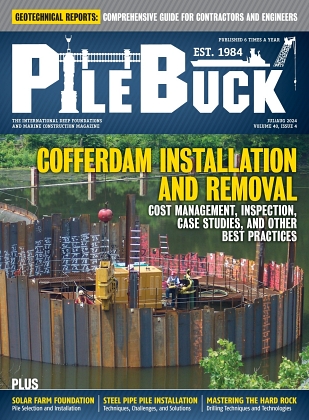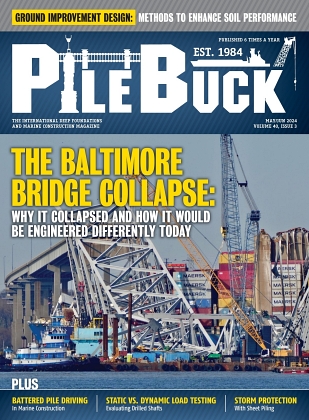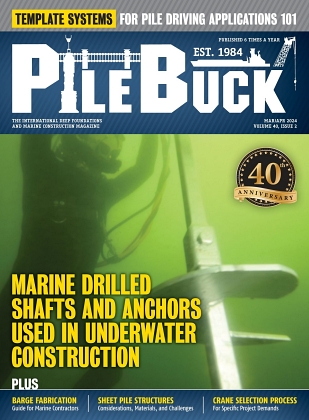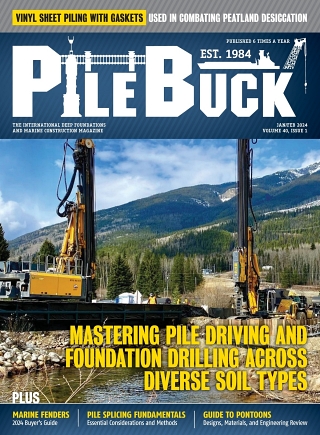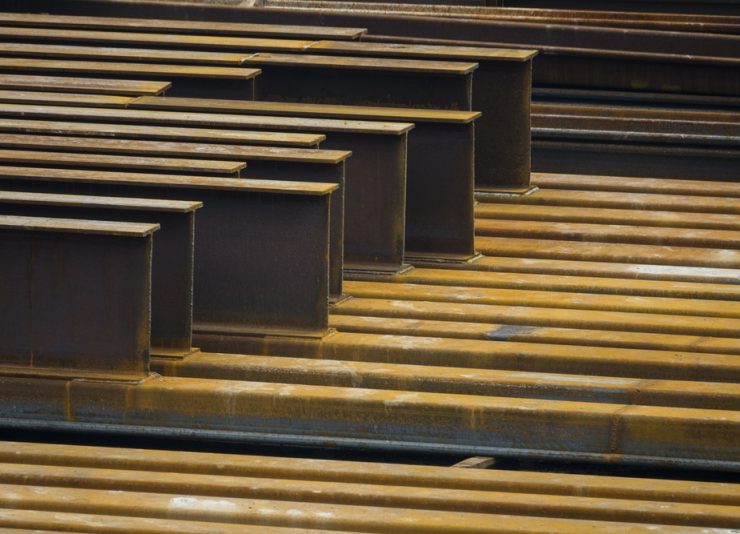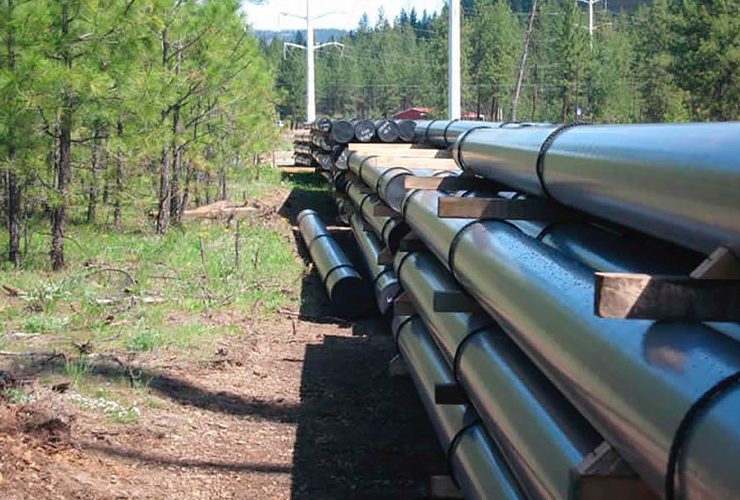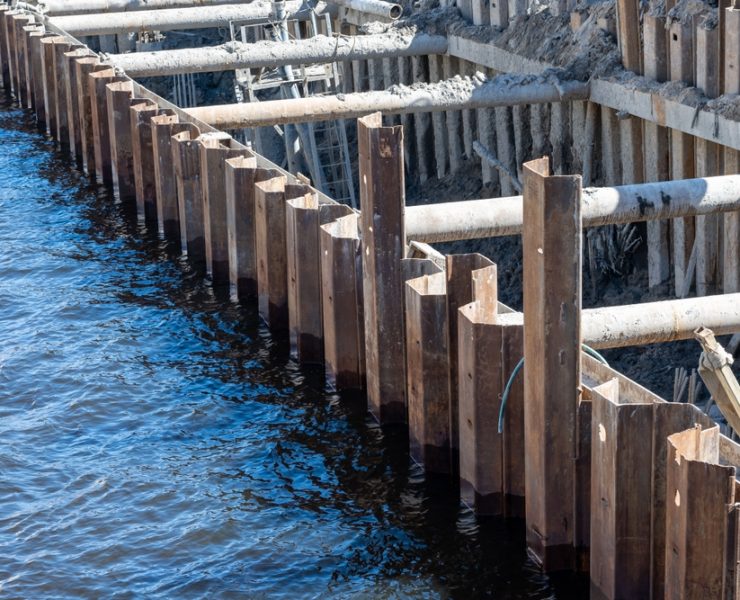Installing Pipe Pilings in Coastal Zones: Techniques and Challenges
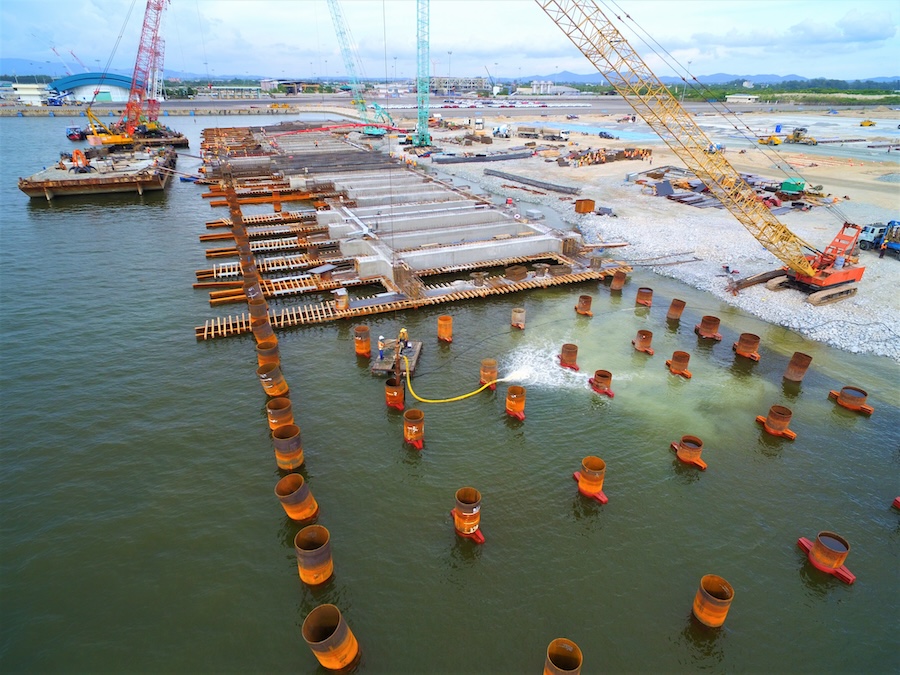

View the complete article here.
This guide discusses the critical role of pipe pilings in coastal projects—exploring their design, installation techniques, and the unique challenges faced in marine environments. It is intended for marine contractors who rely on pipe pilings to build stable foundations for structures like docks, piers, seawalls, and other marine structures in harsh coastal settings.
Understanding Pipe Pilings in Coastal Environments
Pipe pilings are a cornerstone of coastal construction, offering marine contractors a reliable solution for building stable foundations in challenging marine environments.
What Are Pipe Pilings?
Pipe pilings are hollow steel or concrete piles driven deep into the ground to provide robust foundation support, frequently utilized in marine settings where traditional shallow foundations are impractical. These cylindrical structures, typically 12-36 inches in diameter, are designed to transfer heavy loads to deeper, more stable soil or bedrock layers—ensuring structural integrity in coastal projects.
Why Pipe Pilings for Coastal Projects?
Pipe pilings are favored in coastal projects for their high strength, ability to resist lateral forces from waves and currents, and capacity to penetrate deep into soft, unstable coastal soils. Their durability and versatility make them ideal for withstanding the dynamic conditions of marine environments, providing long-lasting support for structures in areas prone to erosion or tidal shifts.
Common Coastal Applications
Marine contractors commonly use pipe pilings to support a variety of coastal structures—including docks and piers for boating access, seawalls and breakwaters to protect against erosion, and offshore platforms for energy or research purposes. These applications highlight the critical role pipe pilings play in ensuring stability and safety for infrastructure in coastal regions, where environmental forces are relentless.
Design Considerations for Pipe Pilings in Coastal Projects
Designing pipe pilings for coastal projects requires careful consideration of site-specific factors to ensure durability and stability in harsh marine environments.
Geotechnical and Environmental Factors
Marine contractors must assess geotechnical factors like soil conditions—using borehole sampling to determine soil type and strength—and environmental factors such as water depth, tidal forces, and wave action to ensure proper pile design and depth. These assessments, often conducted with tools like piezometers and current meters, help determine how deep piles need to be driven (e.g., 20-100 feet) to reach stable layers and withstand coastal dynamics.
Material Selection and Corrosion Protection
Choosing between steel and concrete pipe pilings depends on project needs—steel offers superior strength for deep penetration, while concrete resists corrosion better in saltwater, though steel can last 50-70 years with protective measures like epoxy coatings or cathodic protection systems using sacrificial anodes. These corrosion protection strategies are critical to combat saltwater’s corrosive effects, especially in the splash zone where exposure to air and waves accelerates deterioration.
Load and Stability Requirements
Calculating load-bearing capacity involves determining the vertical and lateral loads pipe pilings must support, factoring in dynamic coastal forces like storm surges and currents—often using software like SPW911 to model stability. Contractors ensure lateral stability by designing piles to resist wave-induced forces, sometimes incorporating additional bracing or deeper embedment to maintain structural integrity under extreme conditions.
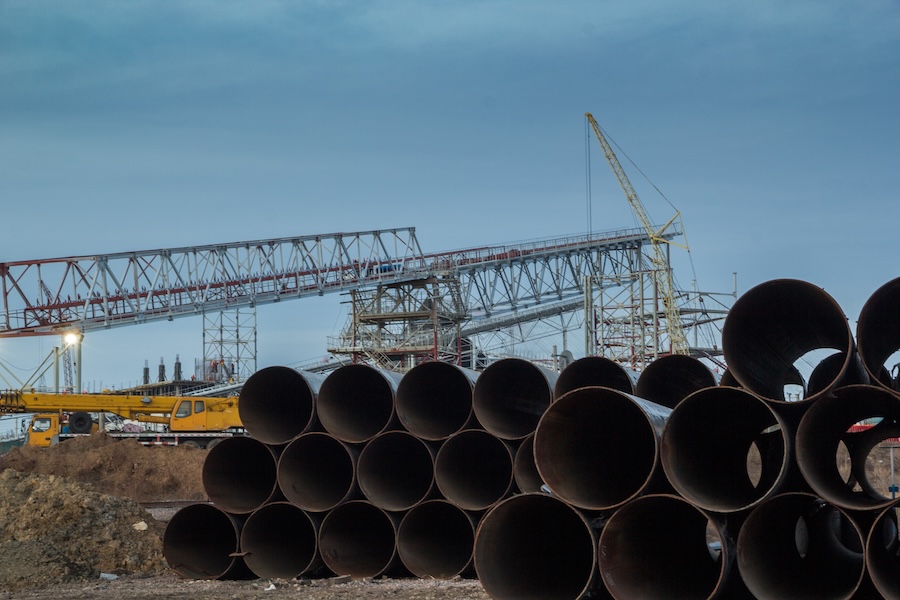
Installation Techniques for Pipe Pilings
Proper installation of pipe pilings in coastal projects is critical to ensure a stable foundation, requiring careful planning and precise execution by marine contractors.
Pre-Installation Planning
Pre-installation planning involves thorough site preparation, including geotechnical surveys to assess soil conditions and water depth, as well as ensuring equipment access in coastal zones by clearing obstacles and staging heavy machinery like cranes and pile drivers. This step ensures the site is ready for safe and efficient installation, minimizing delays due to unforeseen challenges like tidal fluctuations or restricted access.
Driving Pipe Pilings
Driving pipe pilings typically involves using pile drivers, such as hydraulic or vibratory hammers, to force the piles—often 12-36 inches in diameter—deep into the ground, with contractors adjusting techniques to address challenges like soft coastal soils that may require slower driving or hard bedrock that demands higher impact forces. The process can take several hours per pile, depending on depth (e.g., 20-100 feet), and may involve pre-drilling in dense layers to facilitate penetration without damaging the pile.
Ensuring Alignment and Stability
To ensure piles are driven vertically and uniformly in marine environments, contractors use methods like templates—temporary frames to guide pile placement—or laser alignment tools to maintain precision, especially in turbulent waters where currents can shift equipment. These techniques help achieve consistent alignment, preventing structural issues and ensuring the piles can withstand lateral forces from waves and tides over the long term.
Challenges and Solutions in Coastal Pipe Piling Projects
Coastal pipe piling projects face unique challenges that marine contractors must address to ensure long-term stability and compliance in harsh marine environments.
Corrosion in Saltwater Environments
Corrosion poses a significant challenge in saltwater environments. Steel pipe pilings can last 50-70 years if protected with measures like epoxy coatings or cathodic protection systems using sacrificial anodes. While regular maintenance, such as annual inspections and reapplying coatings, helps extend their lifespan. Without protection, the splash zone—where air and water exposure accelerates rust—can significantly reduce durability, making proactive corrosion management essential for coastal projects.
Dynamic Environmental Forces
Waves, tides, and storms exert dynamic forces that can compromise pile stability—potentially causing lateral movement or scour around the pile base. However, solutions like deeper pile penetration (e.g., 20-100 feet to reach stable bedrock) or additional bracing with cross-members can enhance resistance. Contractors can also use scour protection, such as riprap or concrete mats around the pile base, to mitigate erosion and ensure the structure withstands extreme weather events over time.
Environmental and Regulatory Compliance
Navigating regulations like the Clean Water Act requires early engagement with agencies to secure permits, while minimizing ecological impact involves using silt curtains to contain sediment and protect marine life during installation. Contractors should also conduct environmental assessments to identify sensitive habitats, such as fish spawning areas, and schedule work to avoid peak migration periods—ensuring compliance and reducing ecological disruption in coastal zones.

Equipment and Technology for Pipe Piling Installation
The right equipment and technology are vital for marine contractors to install pipe pilings effectively in coastal settings, ensuring precision and durability in challenging marine environments.
Essential Equipment Overview
Installing pipe pilings in coastal projects requires key tools like hydraulic pile drivers to deliver high-impact force for driving piles into dense soils, vibratory hammers for softer coastal sediments where vibration reduces friction, and marine cranes to position heavy piles (often 12-36 inches in diameter) accurately in waterlogged sites. Additional equipment, such as barges for offshore access and water pumps to manage seepage, ensures contractors can handle the unique demands of marine installations efficiently.
Innovations in Pipe Piling Technology
Advancements like real-time pile monitoring systems allow contractors to assess pile capacity and integrity during installation, ensuring proper depth and stability. In addition, corrosion-resistant coatings—like those from Denso North America—offer high-performance solutions such as petrolatum tapes and epoxy coatings, extending the lifespan of steel pipe pilings to 50-70 years in saltwater.
5 Tips for Coastal Pipe Piling Success
Here are 5 tips to consider on your next coastal pipe piling project…
- Inspect soil thoroughly before installation: Use borehole sampling and cone penetration testing (CPT) to inspect soil conditions at depths of 20-100 feet, ensuring your pipe piling design (e.g., 12-36 inch diameter piles) matches the soil’s bearing capacity and avoids issues like settlement in soft coastal soils.
- Optimize pile installation for coastal conditions: Drive pipe pilings with hydraulic pile drivers or vibratory hammers—adjusting techniques for soft soils (slower driving) or hard bedrock (pre-drilling)—and use templates to maintain vertical alignment, ensuring piles are installed uniformly despite tidal currents.
- Manage water dynamics during installation: Deploy water pumps and silt curtains to manage seepage and sediment during pile driving, especially in areas with strong wave action or tidal fluctuations, to maintain a stable work environment and protect marine ecosystems.
- Reinforce piles against environmental forces: Install pipe pilings deeper (e.g., 40-50 feet) in areas prone to storms, and add scour protection like riprap around the pile base to combat erosion from waves and currents—ensuring long-term stability for structures like seawalls or piers.
- Conduct post-installation stability checks: After installation, utilize divers and underwater drones to inspect pile alignment and check for scour or early corrosion signs—addressing issues like reapplying coatings immediately to prevent long-term damage in saltwater environments.
View the complete article here.
Why are pipe pilings used in coastal construction projects?
They provide strong, durable foundations that resist waves, currents, and unstable coastal soils.
How is corrosion prevented in steel pipe pilings in saltwater environments?
By using protective coatings and cathodic protection systems like sacrificial anodes.

